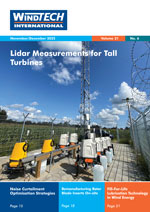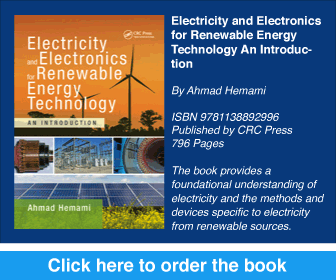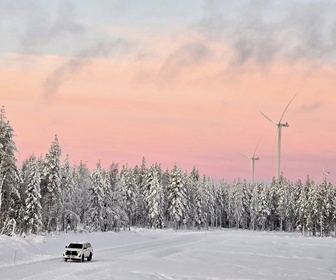- Category: Articles
A Wind Turbine Station Designed to Capture Vertical ‘Winds’
 The atmospheric vortex engine is a new concept for a renewable energy generation process that is capable of generating electricity from solar radiation and the atmosphere. The process has strong similarities to other existing renewable energy generation technologies (the solar chimney and wind turbines). The concept involves creation of a controlled vortex, allowing the energy from the atmosphere to be converted into mechanical work, which can be captured by turbines and converted into electricity. Additional development is required before constructing a full-scale vortex power plant, but the process has the potential to generate large amounts of renewable energy.
The atmospheric vortex engine is a new concept for a renewable energy generation process that is capable of generating electricity from solar radiation and the atmosphere. The process has strong similarities to other existing renewable energy generation technologies (the solar chimney and wind turbines). The concept involves creation of a controlled vortex, allowing the energy from the atmosphere to be converted into mechanical work, which can be captured by turbines and converted into electricity. Additional development is required before constructing a full-scale vortex power plant, but the process has the potential to generate large amounts of renewable energy.By Eric Michaud and Louis Michaud, Vortex Engine, Canada
.
- Category: Articles
Roxtec and Multibrid Work Together to Provide Solutions
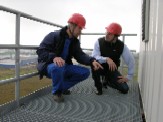 The introduction of the Multibrid M5000 solution has meant a significant step in the development of new wind energy converter systems for the future. Now, going from prototypes to series production, Multibrid in Germany sees further possibilities. The company recognises that cooperation with good suppliers can add further benefits.
The introduction of the Multibrid M5000 solution has meant a significant step in the development of new wind energy converter systems for the future. Now, going from prototypes to series production, Multibrid in Germany sees further possibilities. The company recognises that cooperation with good suppliers can add further benefits.By Ulf Petersson, Roxtec International, Sweden
- Category: Articles
Challenges and Opportunities
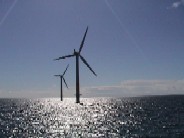 The evolution of wind farms from land-based to offshore locations is gradual but surely significant. Stronger winds, better technologies and less impact on real estate value make offshore wind farming the ‘sexiest’ side of this industry in its attempts to meet the high electricity demands of heavily populated coastal areas.
The evolution of wind farms from land-based to offshore locations is gradual but surely significant. Stronger winds, better technologies and less impact on real estate value make offshore wind farming the ‘sexiest’ side of this industry in its attempts to meet the high electricity demands of heavily populated coastal areas.
By Joe Meilak, Innovaxin Consulting, Malta
.
 The evolution of wind farms from land-based to offshore locations is gradual but surely significant. Stronger winds, better technologies and less impact on real estate value make offshore wind farming the ‘sexiest’ side of this industry in its attempts to meet the high electricity demands of heavily populated coastal areas.
The evolution of wind farms from land-based to offshore locations is gradual but surely significant. Stronger winds, better technologies and less impact on real estate value make offshore wind farming the ‘sexiest’ side of this industry in its attempts to meet the high electricity demands of heavily populated coastal areas.By Joe Meilak, Innovaxin Consulting, Malta
- Category: Articles
Design and other considerations
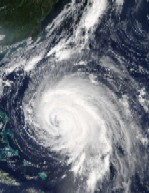 Typhoons can cause significant damage to wind turbines, and this brings new problems for wind turbine design, especially the design of blades. This article describes what happened at a wind farm that suffered typhoon damage and a stop in operation of the wind turbines. The author undertook analysis of the available data and provides a discussion about the phenomena of the accident, the cause of the accident and the protective measures. As a result, the article brings forward some issues that fellow designers need to consider.
Typhoons can cause significant damage to wind turbines, and this brings new problems for wind turbine design, especially the design of blades. This article describes what happened at a wind farm that suffered typhoon damage and a stop in operation of the wind turbines. The author undertook analysis of the available data and provides a discussion about the phenomena of the accident, the cause of the accident and the protective measures. As a result, the article brings forward some issues that fellow designers need to consider.
By Wu Ming Yu, Xinjiang Wind Energy Liability Co Ltd, China
.
 Typhoons can cause significant damage to wind turbines, and this brings new problems for wind turbine design, especially the design of blades. This article describes what happened at a wind farm that suffered typhoon damage and a stop in operation of the wind turbines. The author undertook analysis of the available data and provides a discussion about the phenomena of the accident, the cause of the accident and the protective measures. As a result, the article brings forward some issues that fellow designers need to consider.
Typhoons can cause significant damage to wind turbines, and this brings new problems for wind turbine design, especially the design of blades. This article describes what happened at a wind farm that suffered typhoon damage and a stop in operation of the wind turbines. The author undertook analysis of the available data and provides a discussion about the phenomena of the accident, the cause of the accident and the protective measures. As a result, the article brings forward some issues that fellow designers need to consider.- Category: Articles
Not as Expensive or Exclusive as Perceived
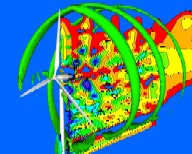 Is computational fluid dynamics (CFD) the preserve of the major wind energy providers? The ability to test full-scale prototypes and evaluate potential wind farm locations should make computer simulation an invaluable tool for all players in the wind energy industry, but has CFD overcome limitations of speed, accuracy and cost? A CFD consultancy firm born out of the Formula 1 racing environment seeks to provide some answers.
Is computational fluid dynamics (CFD) the preserve of the major wind energy providers? The ability to test full-scale prototypes and evaluate potential wind farm locations should make computer simulation an invaluable tool for all players in the wind energy industry, but has CFD overcome limitations of speed, accuracy and cost? A CFD consultancy firm born out of the Formula 1 racing environment seeks to provide some answers.By Jo Scott, Project Team Leader, Advantage CFD, UK
- Category: Articles
Multiple Use of Space
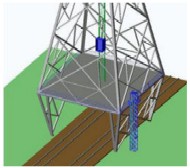 The Netherlands has a high potential for using wind turbine generators (WTGs) to produce electricity. Unfortunately, the Netherlands also has a chronic lack of free, open spaces and the major problem is finding suitable locations to erect these symbols of Dutch ingenuity. Where in the Netherlands are locations to be found to accommodate the large, multi-megawatt wind generators while taking into consideration the environment, the neighbourhood and the neighbours? WinWind (Netherlands) has come up with a unique answer, the Railwind turbine.
The Netherlands has a high potential for using wind turbine generators (WTGs) to produce electricity. Unfortunately, the Netherlands also has a chronic lack of free, open spaces and the major problem is finding suitable locations to erect these symbols of Dutch ingenuity. Where in the Netherlands are locations to be found to accommodate the large, multi-megawatt wind generators while taking into consideration the environment, the neighbourhood and the neighbours? WinWind (Netherlands) has come up with a unique answer, the Railwind turbine.
.
 The Netherlands has a high potential for using wind turbine generators (WTGs) to produce electricity. Unfortunately, the Netherlands also has a chronic lack of free, open spaces and the major problem is finding suitable locations to erect these symbols of Dutch ingenuity. Where in the Netherlands are locations to be found to accommodate the large, multi-megawatt wind generators while taking into consideration the environment, the neighbourhood and the neighbours? WinWind (Netherlands) has come up with a unique answer, the Railwind turbine.
The Netherlands has a high potential for using wind turbine generators (WTGs) to produce electricity. Unfortunately, the Netherlands also has a chronic lack of free, open spaces and the major problem is finding suitable locations to erect these symbols of Dutch ingenuity. Where in the Netherlands are locations to be found to accommodate the large, multi-megawatt wind generators while taking into consideration the environment, the neighbourhood and the neighbours? WinWind (Netherlands) has come up with a unique answer, the Railwind turbine.- Category: Articles
A Foundation Concept for Offshore Wind Farms
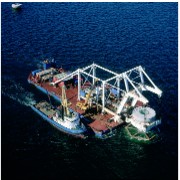 Steel monopile foundations dominate in today’s offshore wind business. ENERGI E2 has a long track record in offshore wind and has worked with concrete gravity foundations as well as steel monopiles. The costs of the main structure of steel monopiles are more than twice as high as those of concrete gravity foundations. Installation of the two types of foundation is likely to be in the same cost range – which would mean that the total cost of concrete gravity foundations should be lower than that of monopile foundations. The very low cost of the concrete foundations for Nysted Offshore Wind Farm illustrate this. It also seems that in the North Sea concrete gravity foundations are more cost effective. Concrete gravity would seem to have potential to become the future foundation concept for offshore wind, and ENERGI E2 intends to exploit the potential of using these foundations.
Steel monopile foundations dominate in today’s offshore wind business. ENERGI E2 has a long track record in offshore wind and has worked with concrete gravity foundations as well as steel monopiles. The costs of the main structure of steel monopiles are more than twice as high as those of concrete gravity foundations. Installation of the two types of foundation is likely to be in the same cost range – which would mean that the total cost of concrete gravity foundations should be lower than that of monopile foundations. The very low cost of the concrete foundations for Nysted Offshore Wind Farm illustrate this. It also seems that in the North Sea concrete gravity foundations are more cost effective. Concrete gravity would seem to have potential to become the future foundation concept for offshore wind, and ENERGI E2 intends to exploit the potential of using these foundations.By Per Vølund, ENERGI E2 A/S, Denmark



